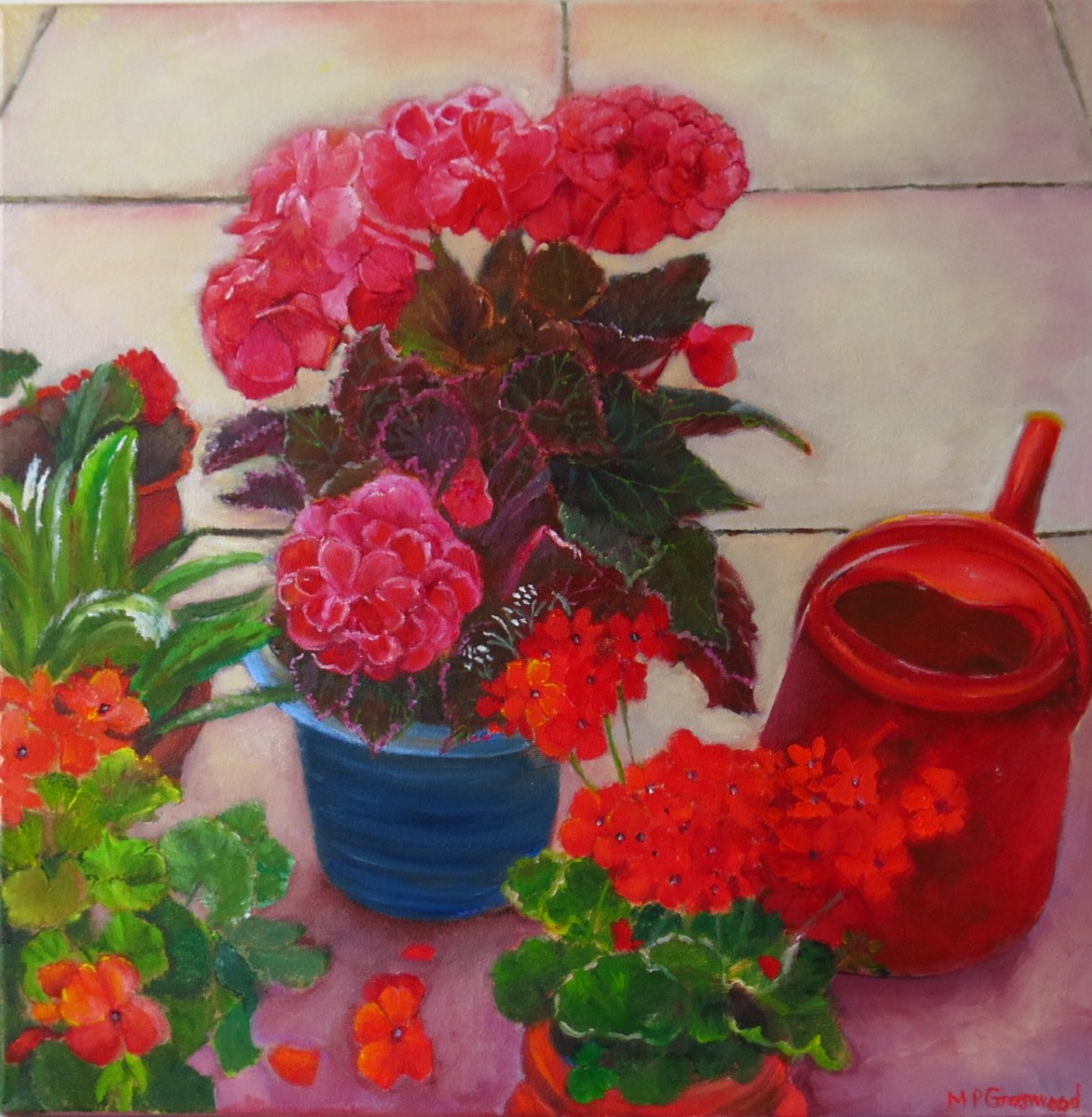This is a short description of the steps I took to paint ‘hart of the magic forest’. As with most of my paintings I have a plan of how it will eventually look but it rarely ends up like I imagined as I like to experiment and try out new techniques. I like the idea that paintings of forests be allowed to grow organically – just like a real forest. I knew I wanted a dark forest with a clearing, a white hart in it somewhere and the feeling of discovery or hope. I also wanted to further experiment with blending techniques I had been mucking around with in previous paintings and I also wanted some texture as textured paintings have facets that make the colours change throughout the day. It can be very magical.
Step 1 was to mix up a large amount of dark oil paint and ‘impasto’ medium (paint thickener) using black, green, purple and magenta.
Step 2 was drawing out the basic sketch for the painting. I find the atmosphere under trees and forests is reminiscent of churches and like to think of forests as nature’s churches but where the deities are animals and whatever spiritual energy governs the seasons. I was thinking this thought as I drew the design.
Step 3 was me taking a selfie and looking like a burke.
Step 4 shows me scratching into the thick paint using the sharp end of a paint brush to mimic pine trees having painted the tree trucks in thick reddish paint. I used both brushes and palette knives to apply the paint.
Step 5 shows the completed ‘underpainting’ which then had to be left for some weeks to dry
Step 6 was the first addition of coloured paint. I first covered the painting with linseed oil to delay drying and then added the paint and then blended it all in with soft brushes. This is a technique that has been used for centuries to remove prominent brush strokes and create a soft effect – Leonardo Da Vinci being a master of it. I then let this layer dry for another week or so.
On step 7 although I liked the soft twilight look I had created, I wanted to add warmer colours and as my intention had been for an uplifting scene rather than a spooky one. At this point, the textures on the surface gave me natural shapes to paint around and that helped create the effect of light shining through the branches of the trees.
Step 8 shows this effect and Step 9 is a close up.
In step 10 you can see where I started to increase the amount of warmer daylight colours. Reds, pinks, yellows and greens in the tree tops. I then changed my mind as although those were nice colours, they detracted from the impact of the colours in the clearing. I wanted the idea to be of looking from dark into light so painted a glaze of dark purple over much of the foreground trees to darken them again (oil paint allows this kind of messing about and that is why I favour it above other mediums). This layer was then allowed to dry for another week.
In step 11 I began to go overboard with vibrant colours and added the idea of ferns in the clearing and made the scene more accessible by creating a path in the middle foreground to allow the viewer in. I also added the dancing lights that rise from the clearing upward to the sky. I often add these in landscapes as they help disperse the eye around the painting and because if you look around in fields or forests, at any time of year, there is always motion in the air itself (birds, insects, leaves, plant spores, rain, sunbeams etc.)
The last thing to go in was the white hart himself. I knew he needed to appear but left it until last to decide where he should appear. Deer are elusive animals that have the ability to appear and disappear out of a forest at will. It seemed apt to let this one do the same.
I was pleased with the resulting painting (which was 1.5 metres wide) as it really felt like a place you could walk into and maybe find adventure you cannot find in this world…
By Gill Bustamante, Jan 2016














